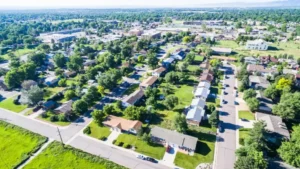Key considerations in neighborhood design include demographics like age, income, family size, and culture, which play a crucial role in shaping community dynamics.Boost eco-friendliness with sustainable practices such as energy efficiency and water conservation. Optimize community needs by balancing commercial and residential spaces. Enhance pedestrian environments with walkability and accessibility. Foster a connected community by promoting engagement with amenities. Mastery of these aspects is vital for achieving business success in construction projects.
Key Takeaways
- Understand neighborhood demographics to tailor amenities effectively.
- Incorporate sustainable design practices for eco-friendly development.
- Balance commercial and residential spaces for a functional environment.
- Enhance walkability and accessibility for a pedestrian-friendly neighborhood.
- Promote community engagement with attractive amenities for a sense of belonging.
Understanding Neighborhood Demographics
Understanding Neighborhood Demographics plays a pivotal role in shaping successful neighborhood design strategies in the construction industry. Analyzing factors such as age, income levels, family size, and cultural background helps developers tailor amenities, layout, and services to meet residents’ needs effectively. This strategic approach promotes a sense of belonging, community cohesion, and overall satisfaction, resulting in vibrant and sustainable neighborhoods that thrive economically and socially.
Incorporating Sustainable Design Practices
In the domain of construction, the integration of sustainable design practices is paramount for nurturing environmentally aware and efficient neighborhood development.
- Energy Efficiency: Implementing energy-saving systems can reduce overall energy consumption.
- Water Conservation: Incorporating water-saving features helps in sustainable water usage.
- Use of Recycled Materials: Utilizing reclaimed materials reduces waste and promotes eco-friendly construction practices.
Balancing Commercial and Residential Spaces
Attaining a harmonious integration of business and living spaces is a pivotal aspect of neighborhood design in construction, ensuring a synchronized and functional environment for varied community needs. Balancing commercial and residential spaces involves strategically zoning areas to promote economic activity while maintaining a sense of community and privacy for residents. This delicate balance improves the overall appeal and functionality of a neighborhood, attracting both businesses and residents alike.
Enhancing Walkability and Accessibility
Promoting pedestrian-friendly environments and optimizing accessibility infrastructure are key components in enhancing the walkability and overall accessibility of a neighborhood in construction.
- Sidewalks and Crosswalks: Ensuring well-maintained walkways and clearly marked crossings.
- Public Transportation Integration: Facilitating easy access to bus stops or train stations.
- ADA Compliance: Implementing designs that cater to individuals with disabilities.
Promoting Community Engagement and Amenities
To promote a united and lively neighborhood environment, it is essential to nurture strong community engagement initiatives and strategically integrate attractive amenities that cater to residents’ diverse needs and preferences. Community centers, parks, and communal spaces can cultivate relationships among residents, while amenities like playgrounds, fitness areas, and walking trails enrich quality of life. These elements not only promote social interaction but also contribute to a sense of belonging within the neighborhood.

Frequently Asked Questions
How Can Neighborhood Design Impact Local Businesses and Economic Success?
Neighborhood design plays a vital role in shaping the environment for local businesses to thrive. Thoughtful planning, accessibility, aesthetics, and community engagement contribute to creating a vibrant economic ecosystem that attracts customers, nurtures growth, and improves overall economic success.
What Role Do Transportation Options Play in Neighborhood Design and Construction?
Transportation options are pivotal in neighborhood design and construction. They impact accessibility, connectivity, and the overall functionality of a community. Properly planned transportation systems improve convenience for residents, attract businesses, and contribute to economic growth.
How Can Neighborhood Design Promote a Sense of Community and Social Interaction?
Neighborhood design can encourage community and social interaction through thoughtful placement of communal spaces, walkways, and green areas. By creating inviting environments that promote gathering and interaction, residents are more likely to connect and build relationships.
What Are Some Innovative Ways to Incorporate Green Spaces and Sustainability Into Neighborhood Design?
Incorporating green spaces and sustainability into neighborhood design can be achieved through strategic planning, utilization of eco-friendly materials, integrating renewable energy sources, and implementing water conservation methods. These creative approaches improve environmental quality and community well-being.
How Do Zoning Regulations and Land Use Planning Influence the Design and Development of Neighborhoods?
Zoning regulations and land use planning play pivotal roles in shaping neighborhood design and development. They determine permissible land uses, building heights, density, and other critical factors that influence the overall aesthetics, functionality, and sustainability of a neighborhood.
Conclusion
In strategic neighborhood design in construction plays a pivotal role in maximizing business success. By understanding neighborhood demographics, incorporating sustainable design practices, balancing commercial and residential spaces, improving walkability and accessibility, and fostering community engagement and amenities, businesses can create environments that support long-term growth and sustainability. By focusing on these key considerations, businesses can position themselves as integral components of the communities they serve, leading to improved brand reputation and increased profitability.
You May Also Like:
